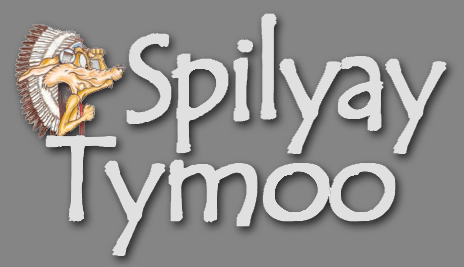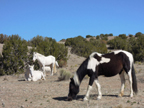The tribal horse removal program is in its fifth year. During that time, the program has removed thousands of excess and unwanted horses from the reservation.
“If the horse removal program was not implemented in 2011, there would be an estimated 11,628 horses on the reservation today,” said Jason Smith, director of tribal Range and Ag. Instead, there are now 3,886, a difference of 7,742 horses.
Smith and Bobby Brunoe, Branch of Natural Resources general manager, gave an update on the horse removal project last week to Tribal Council.
Without the horse removal program, the number of excess horses on the reservation would be 23,388 by 2020, according to the Range and Ag estimate.
The near-term goal for the program is to remove another 1,000 horses from the reservation, during 2016-17, then level off horse removal to about 350 per year. This would reduce the reservation horse population to about 1,500, a manageable number, Smith said.
For comparison, the Yakama Nation has no removal program, and there are 20,000 horses on the Yakama Reservation, causing serious environmental damage.
The Tribal Council stated their continued support for the removal program, as a way to greatly improve fish, deer, elk, other wildlife and native plant habitat on the reservation.
Another benefit has been the creation of dozens of jobs, said Tribal Councilman Ron Suppah.
An aspect of the reservation horse problem began in 2006, when the federal government stopped funding for horsemeat inspection.
“Since then the horse market has been flooded, and the prices for all horses have dropped dramatically,” Jason said. “The consequences of this policy change have been devastating, both economically and environmentally, to tribal nations throughout the country.”
Another unintended consequence of the federal policy is increased neglect and abandonment of horses, he said.
According to a report by the Government Accountability Office: “Clearly, the cessation of domestic slaughter has had unintended consequences, most importantly perhaps, the decline in horse welfare in the U.S.”
So instead of protecting horses, the federal policy has had the opposite effect.
Bobby Brunoe said an issue to keep an eye on is the idea to ban the exporting of horses from the U.S. for slaughter purposes. This would be a disaster for tribal lands, as well as federal lands that deal with the same horse problem, he said.
The horse removal program is funded through the settlement money the tribes received in a natural resources lawsuit against the federal government. The money was ear-marked for horse population control.
Warm Springs is a leader in the National Tribal Horse Coalition, representing five tribes. The NTHC gives a unified voice to the tribes in advocating for the reasonable management of horse populations on reservations.
The National Congress of American Indians, and the Affiliated Tribes of Northwest Indians have both endorsed the efforts of the horse coalition.
The report last week to Tribal Council also included letters of support from Jonathan Treasure, tribal Hydrologist and Climate Change Program coordinator, and Brad Houslet, Fisheries Department manager.


